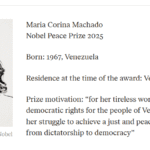Sri Lanka President visit and Indo-Columbo Relations: Basics Explained

India and Sri Lanka on Friday (22 July 2023) adopted a ‘vision document’ for a deeper economic partnership after talks between visiting Sri Lankan President Ranil Wickremesinghe and Prime Minister Narendra Modi.
The ‘vision document’ adopted is based on five pillars: maritime connectivity; air connectivity; energy and power connectivity; trade, economic and financial connectivity, and people-to-people connectivity.
On maritime connectivity, it outlines cooperation in development of ports and logistics at Colombo, Trincomalee and Kankesanthurai, with an aim to consolidate regional logistics and shipping. It also talks of resumption of passenger ferry services between Nagapattinam in India and Kankesanthurai in Sri Lanka besides working towards early resumption of ferry services between Rameshwaram and Talaimannar.
On energy and power connectivity, the two sides plan to establish a high capacity power grid interconnection to enable bidirectional electricity trade between Sri Lanka and other regional countries, including those of the BBIN (Bangladesh, Bhutan, India, Nepal) initiative.
Both sides agreed to operationalise “UPI-based digital payments for further enhancing trade and transactions between businesses and common people”.
The two countries also plan to promote awareness and popularize India’s Buddhist circuit, and Ramayana trail as well as ancient places of Buddhist, Hindu and other religious worship in Sri Lanka for enhancing tourism.
The document also mentions expansion of flights between Chennai and Colombo, besides exploring connectivity between Chennai and Trincomalee, Batticaloa and other destinations in Sri Lanka.
INDO-COLUMBO RELATIONS: AN OVERVIEW
India- Sri Lanka both have cultural ties and also India is Srilanka’s biggest trading partner. Regionally, India and Sri Lanka both participate in several multilateral organisations such as South Asian association for Regional Cooperation (SAARC), South Asia Co-operative Environment Programme, South Asian Economic Union and BIMSTEC. All these organisations aim to enhance their commerce.
Sri Lanka is India’s closest maritime neighbour and is strategically located in Indian Ocean and Bay of Bengal.As per its ‘Neighbourhood-First Policy’ and the ‘SAGAR (Security and Growth for All in the Region) Doctrine’, India attaches great importance to Sri Lanka “to keep the Indian Ocean region peaceful and secure”.
In 1998, India and Sri Lanka signed the India–Sri Lanka free trade agreement (ISFTA) which has proved to be a successful initiative. and negotiating a comprehensive Economic Partnership Agreement (CEPA). In 2020, India was Sri Lanka’s 2nd largest trading partner with the bilateral merchandise trade amounting to about USD $ 3.6 billion. Trade with India contributed to almost 65 percent of the total trade of Sri Lanka under four existing free trade agreements. The India-Sri Lanka Free Trade Agreement was signed in 1998 and is in force since March 2000.
Amidst an economic collapse in Sri Lanka, last year, India provided timely monetary assistance of $4 billion. It was used for the supply of fuel, medicines and essential food items. The Tamil Nadu government has also gifted essential items worth US$ 16 million, as part of larger Indian assistance.
Geo-political interests, security needs, economic diplomacy, development assistance and post-armed conflict reconciliation are some of the important factors that determined India-Sri Lanka relations.
Major irritant in the Indo-Lanka ties
- Thecancelling of India-Sri Lanka-Japan joint venture in the East Container Terminal (ECT) at Colombo Port, delaying the Trincomalee oil tank farm deal and the Sampur renewal energy project.
- The fishermen issue continues to be a major irritant in the Indo-Lanka ties. Sri Lanka accuses Indian fishermen of straying into its territorial waters, while the latter maintain they are only fishing in their traditional areas, especially around Katchatheevu, an islet ceded to Colombo in 1974.
- Permitting a Chinese surveillance ship, Yuan Wang 5 to dock in the Hambantota Port. Sri Lanka is a member of China’s Belt and Road Initiative(BRI)
- The issue of rights of minority Tamil community:
India is demanding the implementation of 13th Amendment to Sri Lanka’s Constitution (that devolves greater power to Tamil-dominated Northern and Eastern regions) Since the end of Eelam War IV, India has taken keen interest in the relief, rehabilitation and resettlement of those displaced by the conflict. Apart from providing requisite monetary assistance, India has sent 2,600 tonnes of galvanized steel sheets to construct shelter for approximately 5,000 families living in relief camps in northern Sri Lanka and an additional aid to construction of 50,000 houses to the IDPs. New Delhi has also deployed over eight demining teams in sanitising the conflict areas of landmines and unexploded objects to facilitate resettlement. From time-to-time India expressed concerns to the Sri Lankan government over the progress of the resettlement.
- The space for foreign powers like China and Pakistan in the island and, most importantly.Chinese help in infrastructure building (Hambantota deep-sea port) and allowing Chinese submarines to duck in Colombo has raised security concern in India.
- Dispute over Katchathivu island
Katchatheevu — which is 18 nautical miles off the Indian coast, fishing in the waters around it and the safety of fishermen is one of the major irritant in the relations.







0 Comments